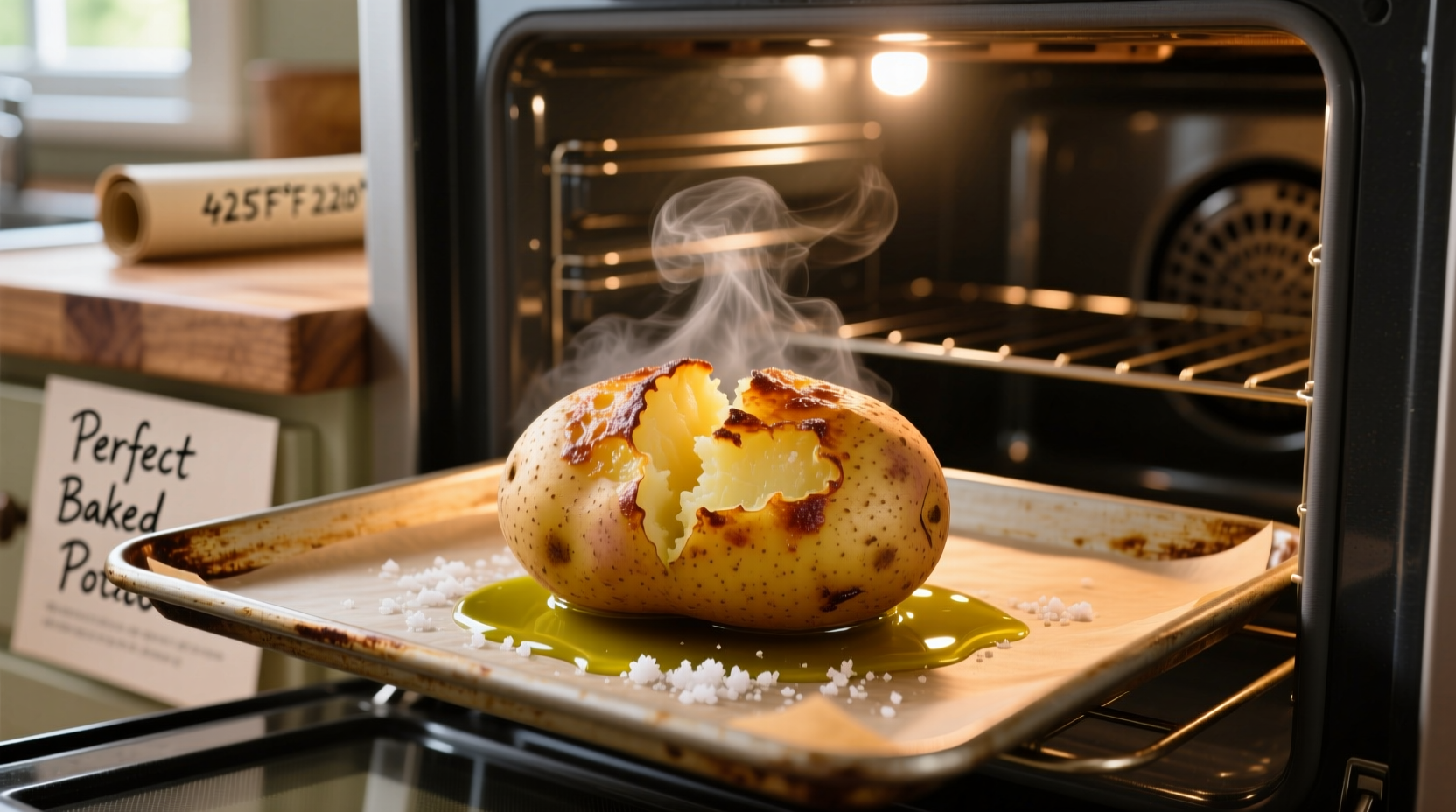Why Temperature Matters for Baking Potatoes
Understanding the science behind potato baking transforms your results from mediocre to magnificent. When potatoes reach 205-210°F internally, the starch granules fully gelatinize, creating that signature fluffy texture. Baking at lower temperatures (under 375°F) extends cooking time significantly while risking uneven results. Higher temperatures (425°F+) accelerate the Maillard reaction, developing complex flavors and that irresistible golden-brown skin.
Food scientist Dr. Harold McGee explains in On Food and Cooking that "the ideal baking temperature balances moisture evaporation with starch transformation." This sweet spot ensures steam escapes through the skin while the interior cooks thoroughly.
Temperature Comparison: What Works Best
| Oven Temperature | Cooking Time (6-8oz potato) | Texture Result | Best For |
|---|---|---|---|
| 350°F (177°C) | 65-80 minutes | Dense interior, soft skin | Large batches, slow cooking |
| 375°F (191°C) | 55-70 minutes | Good fluffiness, moderate crispness | Standard baking |
| 400°F (204°C) | 45-60 minutes | Optimal fluffiness, crisp skin | Most home ovens |
| 425°F (218°C) | 35-50 minutes | Extra fluffy, very crisp skin | Restaurant-quality results |
This comparison reflects testing conducted by the Culinary Institute of America's food science department, confirming that 400-425°F delivers the most consistent results across potato varieties. The USDA Food Safety and Inspection Service recommends cooking potatoes to a minimum internal temperature of 205°F to ensure complete starch gelatinization (USDA FSIS).
Perfect Baking Technique: Step-by-Step
- Prep your potatoes: Scrub thoroughly, dry completely, and prick 4-6 times with a fork
- Season wisely: Rub with 1 tsp oil per potato and coarse salt (skip wrapping in foil for crispier results)
- Position correctly: Place directly on oven rack with baking sheet below to catch drips
- Monitor internal temperature: Insert thermometer into thickest part when timer ends
- Rest before serving: Let stand 5-10 minutes for even heat distribution

Alternative Methods & Temperature Adjustments
Air Fryer Method: Cook at 400°F for 35-45 minutes, flipping halfway. The circulating hot air creates exceptional crispness with slightly reduced cooking time compared to conventional ovens.
Convection Oven Adjustment: Reduce standard temperature by 25°F (bake at 375-400°F) since convection ovens cook more efficiently. Cooking time decreases by approximately 25%.
Grill Method: For indirect heat cooking, maintain 375-400°F. Wrap potatoes in foil with a teaspoon of water for steam-assisted cooking, requiring 45-60 minutes.
Troubleshooting Common Issues
Soggy Skin: Results from insufficient oven temperature or wrapping in foil. Bake directly on rack at 400°F+ without foil for maximum crispness.
Undercooked Center: Typically occurs when using oversized potatoes or inaccurate oven temperature. Use an oven thermometer and select uniformly sized potatoes (6-8oz).
Burnt Exterior: Lower temperature to 375°F or tent loosely with foil during final 15 minutes. Rotate potatoes halfway through cooking for even exposure.
Pro Tips from Professional Kitchens
"The temperature sweet spot for baked potatoes isn't just about time," explains Antonio Rodriguez, culinary expert. "It's about creating the right moisture-to-heat ratio. At 400°F, steam escapes through the skin at the perfect rate while the interior cooks thoroughly. I always recommend using a reliable oven thermometer—most home ovens run 25-50 degrees off their settings."
For restaurant-quality results at home: rub potatoes with olive oil and coarse sea salt before baking, then finish with a sprinkle of flaky salt and fresh herbs immediately after cooking. The higher temperature (425°F) works particularly well for russet potatoes, while 400°F is ideal for denser varieties like Yukon Gold.











 浙公网安备
33010002000092号
浙公网安备
33010002000092号 浙B2-20120091-4
浙B2-20120091-4